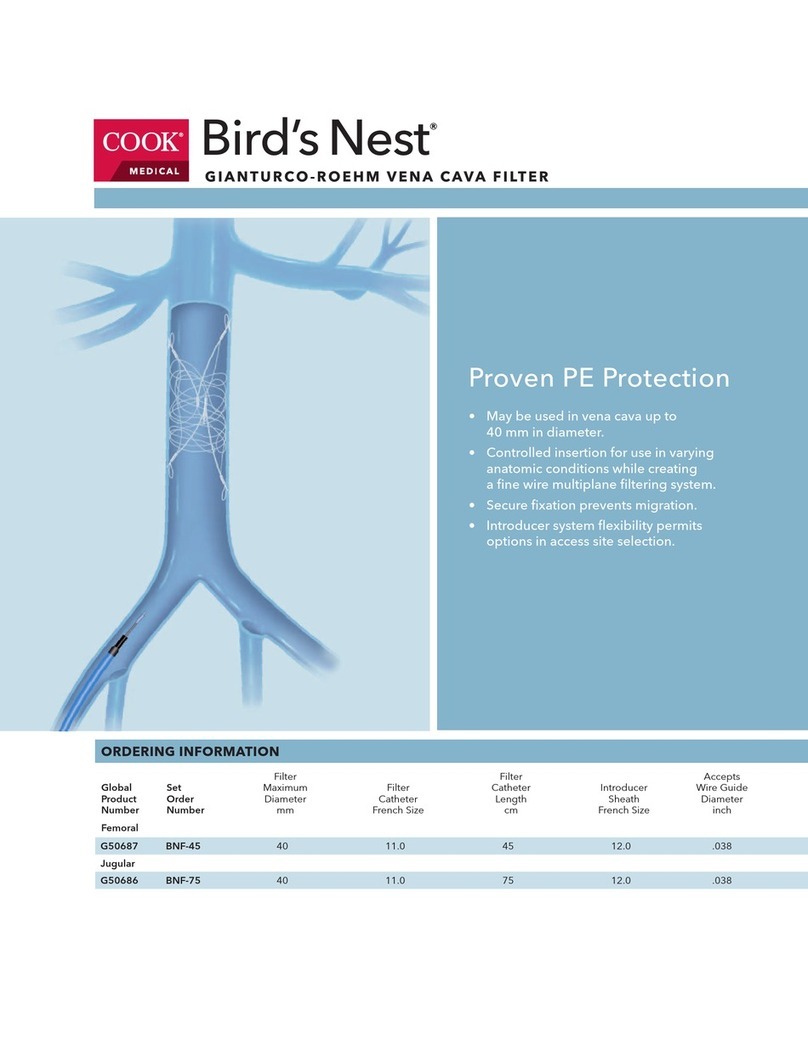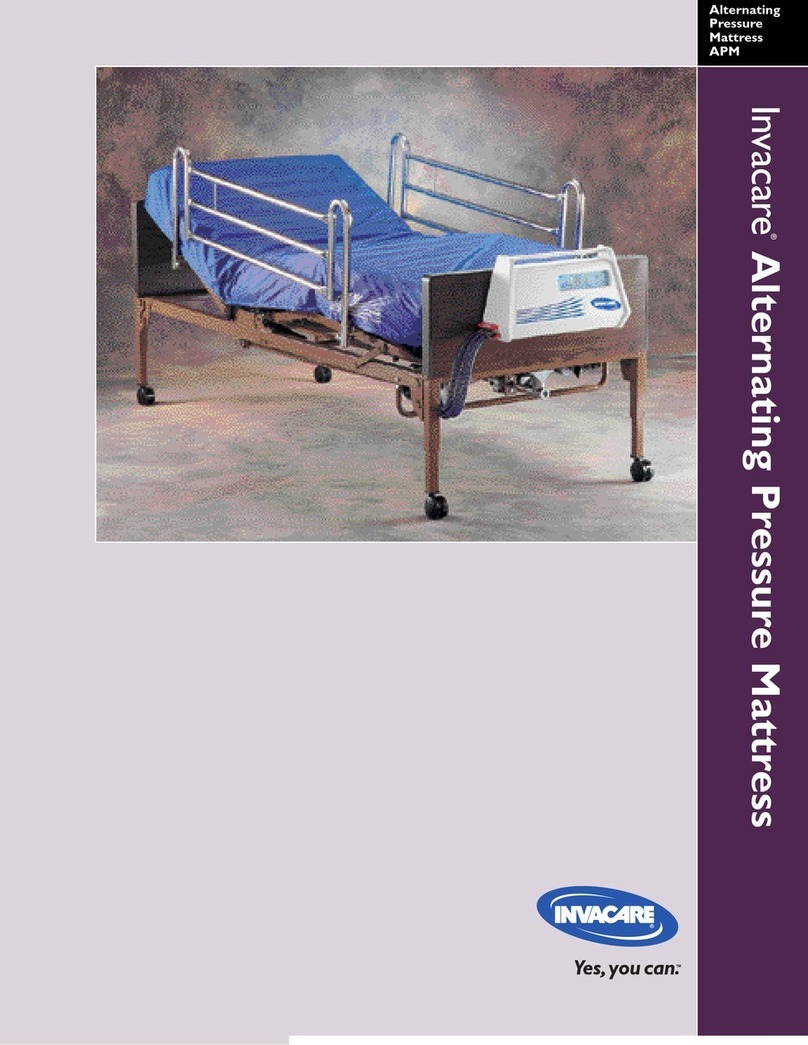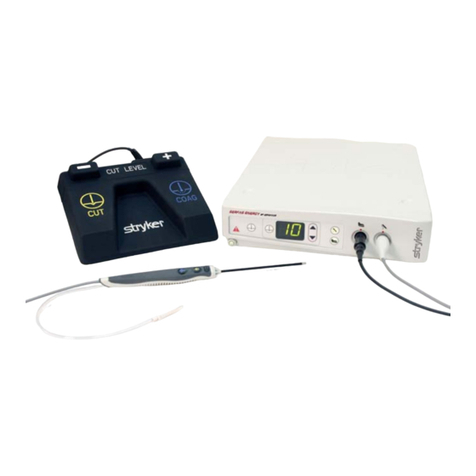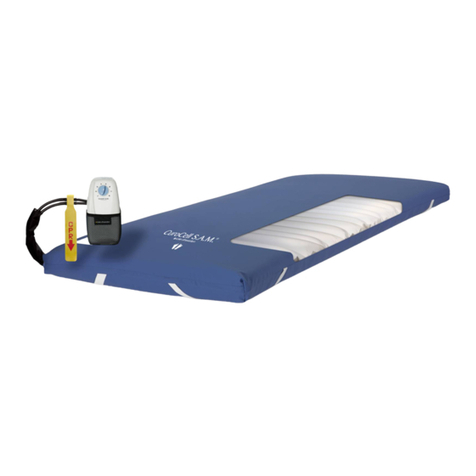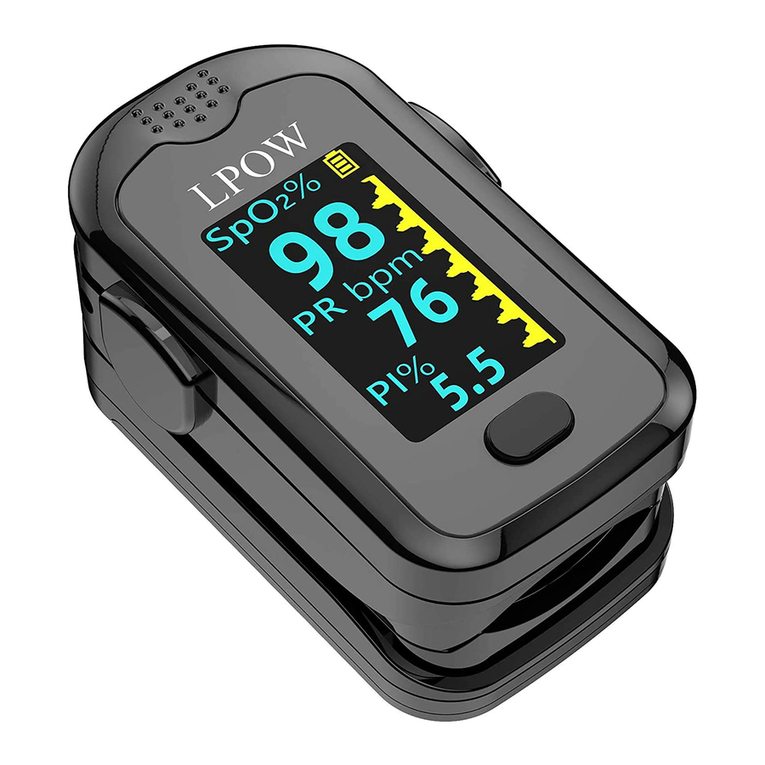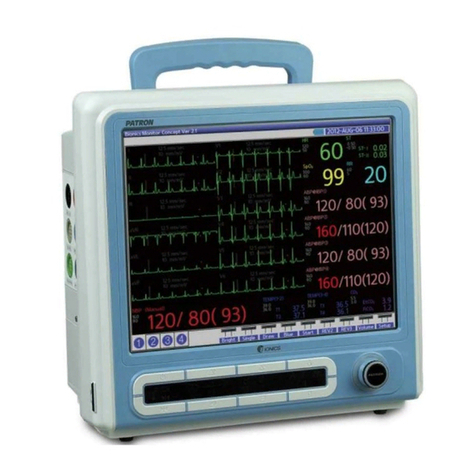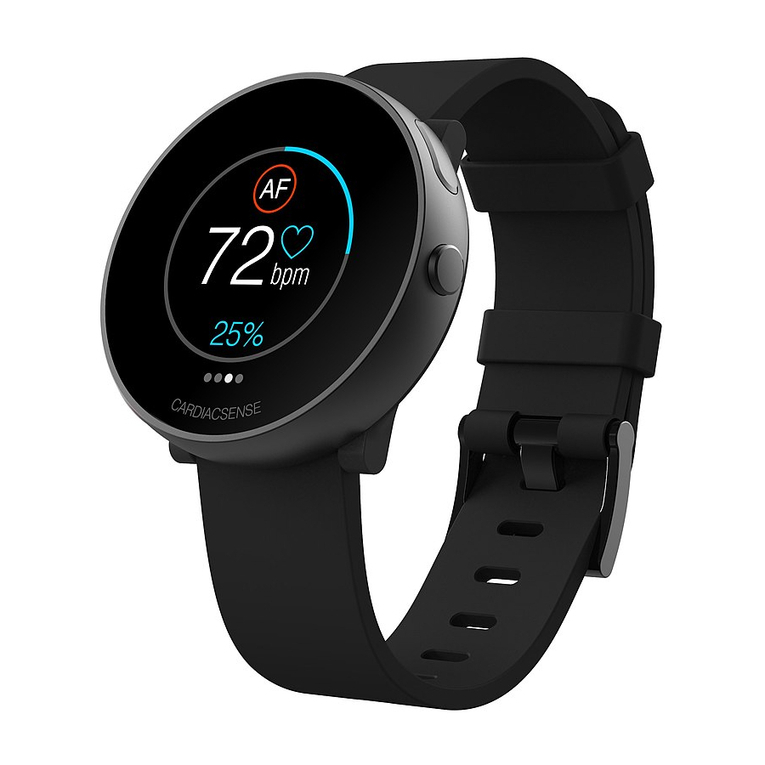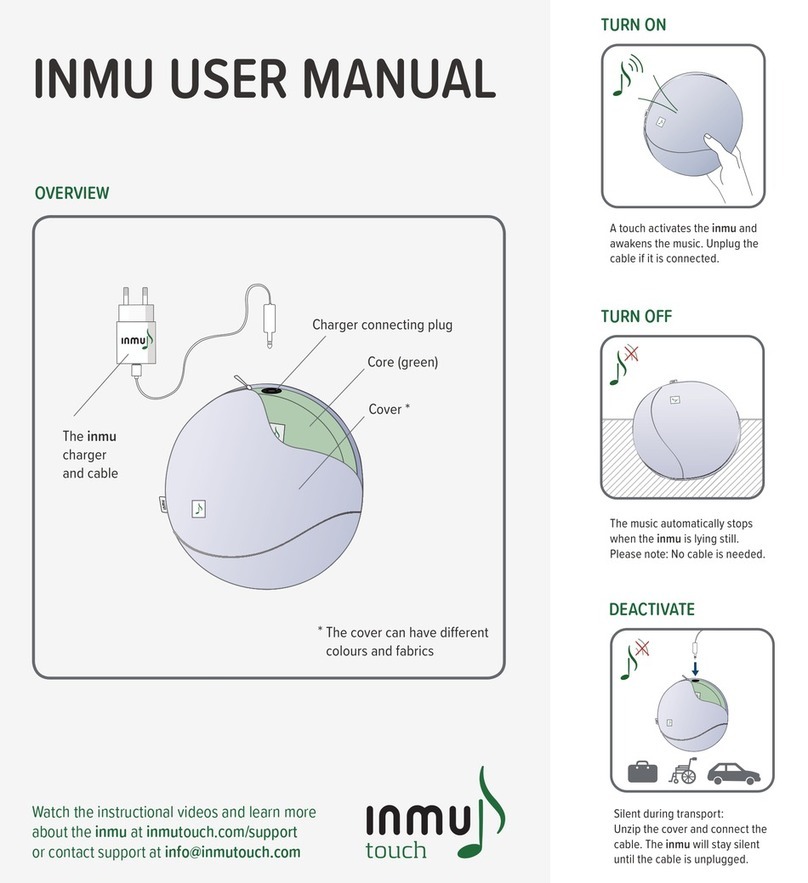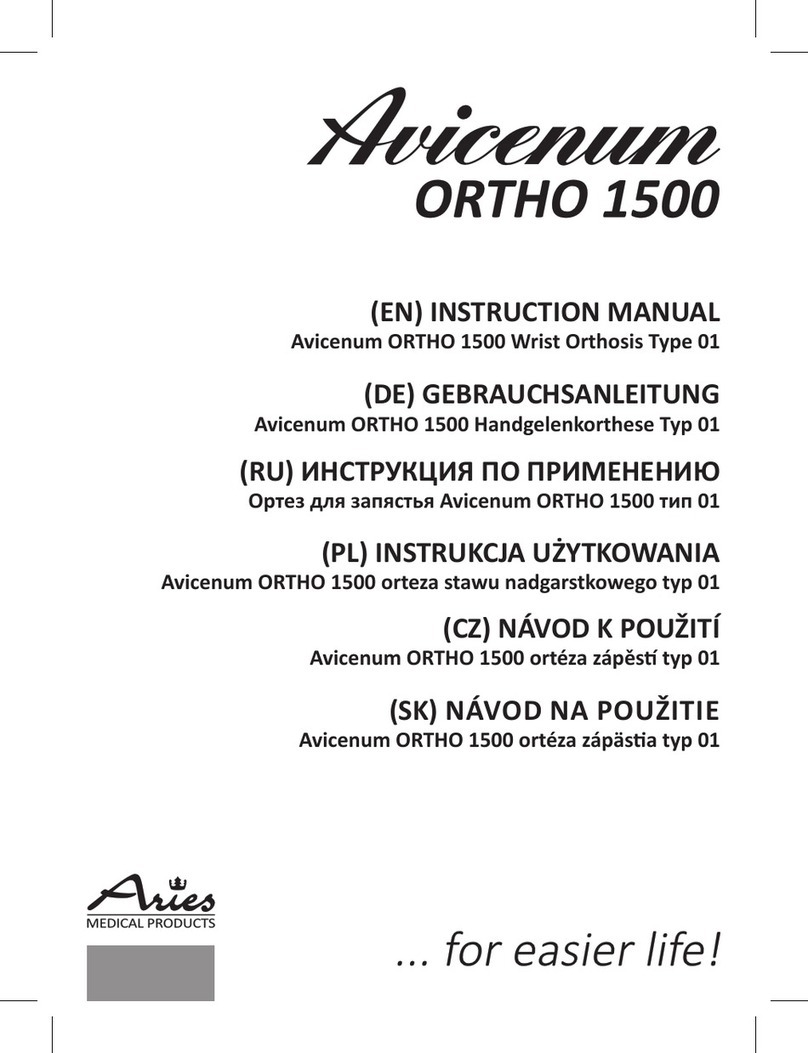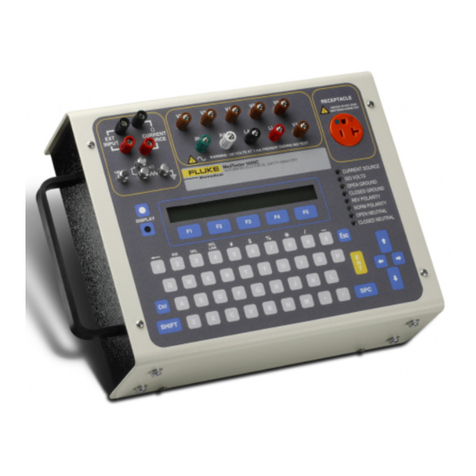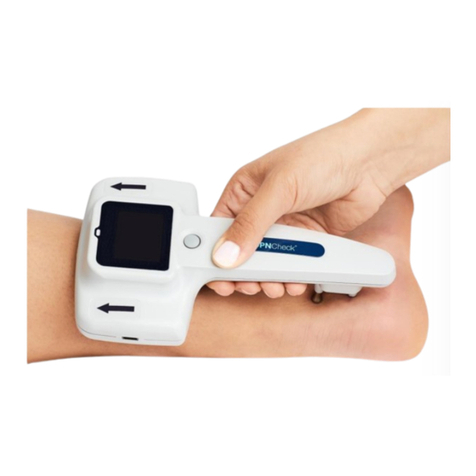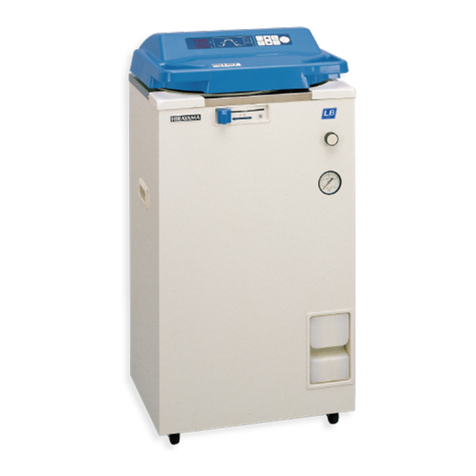BenQ T3300 Technical specifications

T3300
Ultrasound System
Basic Operating Instructions

T3300 Diagnostic Ultrasound System |1| B00601-010 4/10/17
Table of Contents
Chapter 1: Read This First..........................................................................................................................1
Intended Audience................................................................................................................................. 2
Intended Use ......................................................................................................................................... 2
Warnings................................................................................................................................................ 3
WEEE.................................................................................................................................................... 3
Discarding the Tablet and Batteries....................................................................................................... 3
Equipment List....................................................................................................................................... 4
Conventions........................................................................................................................................... 4
System Warranty................................................................................................................................... 5
Chapter 2: Safety Information .....................................................................................................................6
Symbols................................................................................................................................................. 8
System Label Icons.......................................................................................................................9
System Button...............................................................................................................................9
Shipping Label Icons...................................................................................................................10
Electrical Safety................................................................................................................................... 10
Battery Usage/Disposal...............................................................................................................11
Electrical Fast Transients (EFT)..................................................................................................11
Electromagnetic Interference (EMI).............................................................................................12
Surges to AC Power Mains.........................................................................................................15
Mechanical Safety ............................................................................................................................... 15
Equipment Protection .......................................................................................................................... 15
RF Safety............................................................................................................................................. 16
Biological Safety.................................................................................................................................. 16
Heating........................................................................................................................................17
Cavitation ....................................................................................................................................17
Safe Scanning Guideline.............................................................................................................17
Operator Safety ................................................................................................................................... 18
Infection Control..........................................................................................................................18
Disposable Drape........................................................................................................................18
Waterproof and Dustproof Ratings...................................................................................................... 19
Understanding the MI/TI Display ......................................................................................................... 19
TI.................................................................................................................................................21
MI ................................................................................................................................................21
Display and Report in Different Modes........................................................................................22
Operator Control Features ..........................................................................................................22
Transducer Surface Temperature Rise ............................................................................................... 22
Chapter 3: Overview..................................................................................................................................23
System Capabilities............................................................................................................................. 24
Imaging........................................................................................................................................24
Transducer Types .......................................................................................................................24
Measurements.............................................................................................................................24
Calculations.................................................................................................................................24
Image Acquisition and Review....................................................................................................24
Connectivity.................................................................................................................................25
System Overview................................................................................................................................. 26
Front and Side Views..................................................................................................................26
Rear and Top/Bottom Views .......................................................................................................28
Transducer Overview........................................................................................................................... 29
Clinical Applications and Transducers ........................................................................................29
Indications for Use and Supporting Transducers................................................................................. 29
Chapter 4: Preparing the System..............................................................................................................31
Inserting a microSD Card .................................................................................................................... 32
Using the Stand................................................................................................................................... 33
Charging the System........................................................................................................................... 33
Installing the Transducer Holder.......................................................................................................... 34
Connecting the Transducer ................................................................................................................. 35
Removing the Transducer ................................................................................................................... 36
Using the System On The Go.............................................................................................................. 37

T3300 Diagnostic Ultrasound System |2| B00601-010 4/10/17
Wall-mounting Your Tablet.................................................................................................................. 38
Outputting the System Display to an HDMI-Enabled TV or Monitor.................................................... 39
Chapter 5: Using the System ....................................................................................................................40
Turning On/Off the System.................................................................................................................. 41
Launching the Main Screen................................................................................................................. 41
Setting the System Time and Date...................................................................................................... 42
Controlling the System......................................................................................................................... 43
Gestures for Controlling the Real-time/Frozen Imaging Screens................................................44
Gestures for Controlling the Real-time Imaging Screen..............................................................44
Gestures for Controlling the Frozen Imaging Screen..................................................................45
Setting the System Language.............................................................................................................. 45
Identifying the Main Screen Layout ..................................................................................................... 45
System Menu Screen..................................................................................................................45
Imaging Screen (Real-time) ........................................................................................................46
Imaging Screen (Frozen).............................................................................................................48
Quick Setup.................................................................................................................................50
Virtual Keyboard..........................................................................................................................51
Scan Properties Display..............................................................................................................51
Switching the Control Panel Pages ..................................................................................................... 52
Managing the System Power............................................................................................................... 52
Battery Status Icons....................................................................................................................53
Sleep Mode.................................................................................................................................53
Managing Disk Space.......................................................................................................................... 53
Network Configuration......................................................................................................................... 54
Connecting the System to the Network by Ethernet....................................................................54
Connecting the System to the Wireless Network........................................................................54
Connecting the System to a Bluetooth Device............................................................................55
Unpair a Bluetooth Device...........................................................................................................55
DICOM Configuration .......................................................................................................................... 55
Adding Servers............................................................................................................................55
Local Host ...................................................................................................................................56
Managing Outgoing Queue.........................................................................................................56
Casting the System Screen to an External Display............................................................................. 57
Chapter 6: Performing an Exam................................................................................................................58
Starting a New Exam........................................................................................................................... 59
Adding a New Patient.......................................................................................................................... 59
Updating Patient Information.......................................................................................................59
Loading a Worklist............................................................................................................................... 60
Selecting a Preset................................................................................................................................ 60
Customizing a Preset..................................................................................................................61
Modifying a Preset.......................................................................................................................61
Managing Presets .......................................................................................................................61
Exporting and Importing Customized Presets.............................................................................61
Setting the Transducer Orientation...................................................................................................... 62
Selecting/Switching a Scan Mode ....................................................................................................... 62
Adjusting the Displayed Image............................................................................................................ 62
Enlarging an Area of the Image...................................................................................................63
Splitting the Imaging Screen .......................................................................................................63
Freezing an Image............................................................................................................................... 65
Adding Annotations.............................................................................................................................. 65
Arrow...........................................................................................................................................66
Annot...........................................................................................................................................66
Label............................................................................................................................................66
Body Mark...................................................................................................................................67
Adding Measurements......................................................................................................................... 68
Measuring in B/Color/Power Modes............................................................................................69
Measuring in M-Mode..................................................................................................................70
Measuring in Spectral Doppler Mode..........................................................................................71

T3300 Diagnostic Ultrasound System |3| B00601-010 4/10/17
Saving and Printing the Image............................................................................................................. 72
Saving an Image Loop ................................................................................................................72
Saving an Image .........................................................................................................................72
Printing an Image........................................................................................................................72
Reviewing the Image........................................................................................................................... 72
Performing Multiple Selections....................................................................................................73
Comparing Images......................................................................................................................74
Generating a Report....................................................................................................................74
Exporting the Exam ............................................................................................................................. 75
Managing the Exam History................................................................................................................. 75
Resuming an Exam.....................................................................................................................76
Starting a New Exam...................................................................................................................76
Finishing Exams..........................................................................................................................76
Deleting Exams...........................................................................................................................76
Exporting Exams.........................................................................................................................77
Importing Exams .........................................................................................................................77
Ending the Exam ................................................................................................................................. 77
Chapter 7: Using Image Controls..............................................................................................................78
B-Mode Image Controls....................................................................................................................... 79
Overview .....................................................................................................................................79
Adjusting Gain.............................................................................................................................79
Adjusting Frequency....................................................................................................................79
Adjusting Time Gain Compensation (TGC).................................................................................79
Adjusting the Scan Depth............................................................................................................80
Adjusting the Focus Depth, Focal Zone and Focal span.............................................................80
Adjusting Dynamic Range...........................................................................................................80
Using Tissue Harmonic Imaging (THI)........................................................................................80
Adjusting Persistence..................................................................................................................80
Adjusting Sharpness and Smoothing ..........................................................................................80
Adjusting Gray Map.....................................................................................................................80
Adjusting Chroma Map................................................................................................................80
Adjusting Steer Angle..................................................................................................................80
Adjusting the Sector Width and Position.....................................................................................81
Adjusting Power ..........................................................................................................................81
Using Trapezoidal Imaging..........................................................................................................81
Adjusting Density.........................................................................................................................81
Using Compound Imaging...........................................................................................................81
Using ENV (Enhanced Needle Visualization)..............................................................................81
Color/Power Mode Image Controls...................................................................................................... 82
Overview .....................................................................................................................................82
Adjusting Pulse Repetition Frequency (PRF)..............................................................................83
Inverting the Color Display..........................................................................................................83
Using Directional Power..............................................................................................................83
Selecting a Color Map.................................................................................................................83
Adjusting Wall Filter.....................................................................................................................83
Applying the Smoothing Filter .....................................................................................................83
Adjusting the Color Priority..........................................................................................................83
M-Mode Image Controls...................................................................................................................... 83
Overview .....................................................................................................................................83
Using Steer M..............................................................................................................................84
Adjusting Sweep Speed..............................................................................................................84
Selecting M Process....................................................................................................................84
Inverting the M-Mode Trace Display ...........................................................................................84
Spectral Doppler Mode Image Controls............................................................................................... 85
Overview .....................................................................................................................................85
Adjusting Baseline.......................................................................................................................86
Adjusting Sample Volume (SV) Size...........................................................................................86
Adjusting Correction Angle..........................................................................................................86
Updating the 2D Display..............................................................................................................86
Chapter 8: System Customization.............................................................................................................87

T3300 Diagnostic Ultrasound System |4| B00601-010 4/10/17
Customizing Your System ................................................................................................................... 88
General........................................................................................................................................88
Preset..........................................................................................................................................88
Patient.........................................................................................................................................88
Exam...........................................................................................................................................88
Workflow......................................................................................................................................88
Imaging........................................................................................................................................89
Annotation...................................................................................................................................89
BDMK (Body Mark) .....................................................................................................................89
Measurement ..............................................................................................................................90
Report..........................................................................................................................................90
DICOM ........................................................................................................................................90
Networking ..................................................................................................................................90
Print.............................................................................................................................................90
Servicing your system.......................................................................................................................... 90
Reinstalling Software...................................................................................................................91
Checking the Software Version...................................................................................................91
Checking the Tablet’s Serial Number..........................................................................................91
Checking the License Status.......................................................................................................91
Resetting System Settings..........................................................................................................91
Backing Up System Settings and Patient Data...........................................................................92
Restoring System Settings and Patient Data..............................................................................92
Resetting Your System................................................................................................................92
Chapter 9: Transducer and System Maintenance.....................................................................................93
Transducer Maintenance..................................................................................................................... 94
Transducer Storage............................................................................................................................. 94
Storage for Transport..................................................................................................................94
Daily and Long-Term Storage.....................................................................................................94
Transducer Care.................................................................................................................................. 95
Transducer Care and Operator Safety........................................................................................95
Inspecting the Transducer................................................................................................................... 96
Transducer Care Method..................................................................................................................... 97
Transducer and Cable Cleaning.......................................................................................................... 97
Cleaning Instructions...................................................................................................................97
Ultrasound Transmission Gels............................................................................................................. 98
Compatible Disinfectants and Cleaning Solutions............................................................................... 99
System Maintenance........................................................................................................................... 99
Inspecting the System.................................................................................................................99
Cleaning the System...................................................................................................................99
Chapter 10: Troubleshooting...................................................................................................................103
Chapter 11: Appendices..........................................................................................................................107
Appendix A: Specifications................................................................................................................ 108
System ......................................................................................................................................108
Transducer................................................................................................................................109
Adapter......................................................................................................................................110
Battery.......................................................................................................................................110
Appendix B: Connectivity and Security.............................................................................................. 112
Introduction................................................................................................................................112
Specifications............................................................................................................................112
Appendix C: System Acoustic Output Default Tables........................................................................ 115
C62B Transducer......................................................................................................................115
L154BH Transducer..................................................................................................................117
P42B6 Transducer ....................................................................................................................118
Appendix D: Acoustic Output Reporting Tables for Track 3.............................................................. 119
Definition of Terms Used in Acoustic Output Tables.................................................................119
Acoustic Output Tables for T3300 Transducers........................................................................121
Appendix E: FCC Statement.............................................................................................................. 155
Federal Communications Commission (FCC) Statement .........................................................155

T3300 Diagnostic Ultrasound System |1| B00601-010 4/10/17
CHAPTER
1Read This First
The T3300 Diagnostic Ultrasound System (hereinafter called “system”) is
an easy-to-use, portable ultrasound imaging instrument intended for use
by a qualified operator for ultrasound evaluation and clinical analysis.
The Basic Operating Instructions provides important procedures and
information on how to operate the system and service the system
correctly and safely. Before attempting to operate the system, read this
Basic Operating Instructions and strictly observe all warnings and
cautions. Pay extra attention to the information from "Chapter 2 Safety
Information".
Copyright
Copyright 2017 BenQ Medical Technology. All rights reserved. No part of
this publication may be reproduced, transmitted, transcribed, stored in a
retrieval system or translated into any language or computer language, in
any form or by any means, electronic, mechanical, magnetic, optical,
chemical, manual or otherwise, without the prior written permission of
BenQ Medical Technology.
All other logos, products, or company names mentioned in this Basic
Operating Instructions may be the registered trademarks or copyrights of
their respective companies, and are used for informational purposes only.
Disclaimer
BenQ Medical Technology makes no representations or warranties, either
expressed or implied, with respect to the contents hereof and specifically
disclaims any warranties, merchantability or fitness for any particular
purpose. Further, BenQ Medical Technology reserves the right to revise
this publication and to make changes from time to time in the contents
hereof without obligation of BenQ Medical Technology to notify any
person of such revision or changes.
This Basic Operating Instructions aims to provide the most updated and
accurate information to customers, and thus all contents may be modified
from time to time without prior notice. Please visit http://
BenQMedicalTech.com for the latest version of this operating instructions.

Read This First
T3300 Diagnostic Ultrasound System |2| B00601-010 4/10/17
Contact Information
Pharma Company: BenQ Medical Technology Corporation
Address: 7th floor, No. 46, Zhou-Z Street, Nei-Hu, Taipei 114, Taiwan
Manufacturer: Qisda Corporation
Address: 1st, 5th, 7th Floors, No. 159, Shan-Ying Road, Taoyuan 333, Taiwan
Website: www.BenQMedicalTech.com
Customer Service e-mail: Service@BenQMedicalTech.com
Customer Service Hotline:
Taiwan: 0800-015-533
China: +86 21-6327-7161~3 Ext. 812
International: +886 2-8797-5080 Ext. 5932
1.1 Intended Audience
This document is intended for sonographers, physicians, and biomedical engineers who operate
and maintain the system and are familiar with ultrasound techniques.
1.2 Intended Use
The T3300 is a general-purpose ultrasonic imaging instrument intended for use by a qualified
physician for ultrasound evaluation/clinical analysis etc. It can be used in the following applications:
Abdomen, Cardiology, Gynecology, Obstetric, Breast, Thyroid, Musculoskeletal, Vascular (Carotid,
Venous, Arterial), Nerve, Renal, Urology and so on.
The clinical environments where the system can be used include clinics, hospitals, and clinical point-
of-care for diagnosis of patients.
The system is intended to be installed, used, and operated only in accordance with the safety
procedures and operating instructions given in the system user information, and only for the
purposes for which it was designed.
The system should only be operated by someone who has received proper training in the use and
operation of an ultrasound system. This system produces images derived from sound echoes; those
images must be interpreted by a qualified medical professional. This system in no way interprets
these images or provides a medical diagnosis of the patient being examined.
WARNINGS
• Do not use the system for purposes other than those intended and expressly stated
above. Do not misuse the system, and do not use or operate the system incorrectly.
• Do not use the system in ophthalmology applications.
• Installation, use, and operation of the system are subject to the law in the jurisdictions in
which it is used. Install, use, and operate the system only in such ways that do not
conflict with applicable laws or regulations, which have the force of law. Use of the
system for purposes other than those intended and expressly stated here, as well as
incorrect use or operation, may relieve us or our agents from all or some responsibilities
for resultant noncompliance, damage, or injury.
• System users are responsible for image quality and diagnosis. Inspect the data that is
being used for the analysis and diagnosis, and ensure that the data is sufficient both
spatially and temporally for the measurement approach being used.

Read This First
T3300 Diagnostic Ultrasound System |3| B00601-010 4/10/17
1.3 Warnings
Before using the system, read these warnings and "Chapter 2 Safety Information".
WARNINGS
• Do not attempt to disassemble or modify the system. There are no user serviceable parts
inside this system. Necessary modifications must be made only by the manufacturer or
its designated agents.
• Do not allow any liquid to get inside this system. Water and moisture may cause short-
circuit to the electronic components and lead to malfunctions.
• Do not drop or apply shock/vibration to this system. Strong impacts may damage the
components inside.
• Do not cut, bend, modify, place heavy objects, or step on the cable of the power adapter.
Otherwise the external insulation may be damaged and result in short-circuit or fire.
• Do not use this system near strong electromagnetic sources, such as a microwave oven.
The electromagnetic interference may cause this system to malfunction.
• To avoid electrical shock, use only supplied power cords and connect only to properly
grounded wall outlets.
• The system should not be used adjacent to or stacked with other equipment. If adjacent
or stacked use is necessary, the system should be observed to verify normal operation in
the configuration in which it will be used.
1.4 WEEE
Disposal of Waste Electrical and Electronic Equipment and/or Battery by users in private
households in the European Union.
This symbol on the product or on the packaging indicates that this can not be disposed of
as household waste. You must dispose of your waste equipment and/or battery by
handling it over to the applicable take-back scheme for the recycling of electrical and
electronic equipment and/or battery. For more information about recycling of this
equipment and/or battery, please contact your city office, the shop where you purchased
the equipment or your household waste disposal service. The recycling of materials will
help to conserve natural resources and ensure that it is recycled in a manner that protects
human health and environment.
Recycling information: See http://www.benq.com/support/recycle for details.
1.5 Discarding the Tablet and Batteries
The tablet and internal batteries should be discarded in an environmentally safe manner. Properly
dispose of batteries according to local regulations.
WARNINGS
• Do not disassemble, puncture, or incinerate batteries. Be careful not to short the battery
terminals, because that could result in a fire hazard.
• Use caution when handling, using, and testing the batteries. Do not short circuit, crush,
drop, mutilate, puncture, apply reverse polarity, expose to high temperatures, or
disassemble. Misuse or abuse could cause physical injury.
• If embedded electrolyte leakage occurs, wash your skin with large amounts of water to
prevent skin irritation and inflammation.

Read This First
T3300 Diagnostic Ultrasound System |4| B00601-010 4/10/17
1.6 Equipment List
Check the sales package for the following items. If any item is missing or damaged, contact your
place of purchase immediately.
• BenQ Medical Technology Ultrasound System
• Medical grade AC/DC power adapter
• Warranty Card
•Basic Operating Instructions (this document)
• AC plugs
• One or more BenQ Medical Technology Transducers
WARNINGS
• AC plug types vary by country/region.
• Using accessories, transducers, or power supply units other than those specified may
cause the warranty to void and result in increased emissions, decreased EMI immunity of
the system, or even damages to the system and personal injuries.
• Use of other accessories results in non-compliance.
1.7 Conventions
The system uses certain conventions throughout the interface to make it easy for you to learn and
use:
• Refer to "Controlling the System" on page 43 to control the system using gestures.
• To adjust the parameter value of a function, touch the plus/minus buttons (+/-).
• To type texts into a text field, touch the field and use the virtual keyboard that appears. You can
also use a supported USB or Bluetooth keyboard for entering texts.
• To display a list, touch the down arrow . To display the options, touch the Menu icon .
• To select/deselect an item or to enable/disable a function, tap in the checkbox. For example,
check the exam ; uncheck the exam .
The Basic Operating Instructions uses certain conventions throughout the book to make it easier to
find the information you need.
• The on-screen menu steps needed to perform a function are shown in a condensed form. For
example, touch > Settings >DICOM.
• Refer to the following graphic symbols and numbering styles to alert you to important
information:
This icon marks NOTES; useful tips or additional information that help you get better
use of your product.
This icon marks CAUTIONS; notices describing actions or conditions that may damage
your product or cause injury, and consequently void your warranty or service contract or
lose the patient or system data.
This icon marks WARNINGS; instructions that must be followed. Failure to observe can
cause damages to your product, or result in personal injuries, or even death.

Read This First
T3300 Diagnostic Ultrasound System |5| B00601-010 4/10/17
1.8 System Warranty
The warranty is void if unauthorized personnel perform service or maintenance on the system. To
ensure correct system performance and to obtain warranty service, please contact technical
support. For more information, see "Contact Information" on page 2.
This Device is for medical care person use only.
Only Professionals can install it. To maintain the device operation during the line power off, the
device is battery included.

T3300 Diagnostic Ultrasound System |6| B00601-010 4/10/17
CHAPTER
2Safety Information
This chapter covers the following topics:
•"Symbols" on page 8
•"Electrical Safety" on page 10
•"Mechanical Safety" on page 15
•"Equipment Protection" on page 15
•"RF Safety" on page 16
•"Biological Safety" on page 16
•"Operator Safety" on page 18
•"Waterproof and Dustproof Ratings" on page 19
•"Understanding the MI/TI Display" on page 19
•"Transducer Surface Temperature Rise" on page 22

Safety Information
T3300 Diagnostic Ultrasound System |7| B00601-010 4/10/17
WARNING
Follow the procedures carefully and ensure that the power/electrical/environmental
requirements are satisfied. Failure to observe the instructions or disregard the warnings may
result in damages to the system, personal injury, or even death of the operator or the patient.
Observe the following precautions carefully.
WARNINGS
• This system complies with Type BF general equipment and the EN60601-1 standard,
suitable for continuous operation when connected as a system to a medical grade AC/DC
power adapter or operated from the tablet battery.
• Use only medical grade peripherals in the patient environment.
• Do not block or otherwise obstruct access to the AC plug at the wall. Operators must be
able to quickly unplug the power cable at the wall in case of emergency.
• The system should only be used in a medical facility under the supervision of a trained
physician.
• Only an authorized service technician should perform maintenance.
• Be extremely cautious when placing or moving the system.
• Always position the system on a stable surface where it cannot fall on the patient.
• Do not lift the system by the power cable or the transducer. If either disconnects, the
system could fall on the patient.
• This system has been fully adjusted and tested prior to shipment from the factory.
Unauthorized modifications will void your warranty.
• If this system or the transducer connected displays any signs of malfunction, turn off the
system immediately, disconnect it from the wall outlet, then contact technical support
(See "Contact Information" on page 2)
• Do not use a power adapter other than the one supplied with the system. Connecting the
system to an unknown power adapter is very dangerous and may lead to fire or
explosion.
• Using cables, transducers, or accessories other than those specified for use with the
system may result in increased emissions or decreased immunity of the system.
• The power cable of the system should only be connected to a grounded power socket.
• Do not connect USB peripherals with an extended USB cable. Extended connection may
cause unexpected usage fault.
• Only devices that comply with the EN60601-1 standard, either electronically or
mechanically, can be connected to this system. Recheck the leakage current and other
safety performance indices of the entire system to avoid potential system damage
caused by leakage from a current superposition.
CAUTIONCAUTION
Using accessories, transducers, peripherals, or cables not supplied with the system or
recommended by BenQ Medical Technology can affect the system in the form of increased
emissions or decreased immunity to external EMI/EMC occurrences. Non-specified
peripherals, and cables in some cases, can also increase leakage current or compromise the
safety of the grounding scheme.
• This system does not incorporate any specialized protective measures in the event it is
configured with high-frequency operation devices. The operator should use with caution
in these types of applications.
• The system is in compliance with the Ingress Protection Marking ratings IP21.

Safety Information
T3300 Diagnostic Ultrasound System |8| B00601-010 4/10/17
WARNINGS
• Do not use this system under direct sunlight, near heat sources or in the presence of
flammable substances, otherwise an explosion may occur.
• When using this system for ultrasound examinations, use only the qualified ultrasound
gel that complies with system standards.
• Do not continuously scan the same part of a patient or expose the patient to prolonged
scanning, otherwise it may harm the patient.
• Do not stay at the same position for too long without taking a break while scanning
patients to prevent harm or neck injury.
• Follow the instructions on "Chapter 4 Preparing the System" on page 31 in this Basic
Operating Instructions for complete instructions on the installation of the transducers,
power supply units and all peripheral devices to the system.
• Improper installation of peripherals to the system may cause damage to the system,
peripherals, or personal injury to the operator or the patient.
• Do not use the system for any application until you have read, understood, and know all
the safety information, safety procedures, and emergency procedures contained in this
chapter. Operating the system without a proper awareness of safe use could lead to fatal
or other serious personal injury.
• The system can contain environmentally hazardous materials such as, but not limited to:
heavy metals, general recyclable metals, and plastics. This product should be recycled
according to local and national guidelines for recycling electronic equipment.
• When using additional peripheral equipment powered from an electrical source other
than the ultrasound system, the combination is considered to be a medical system. It is
your responsibility to comply with IEC 60601-1 and test the system to those
requirements.
• Do not use non-medical peripherals, such as report printers, within 1.5 m (5 ft) of a
patient, unless the non-medical peripherals receive power from an isolation transformer
that meets medical safety standards, as defined by standard IEC 60601-1.
• Images printed on a report printer are intended only for reference and should not be used
for diagnostic purposes.
• For proper disposal of this system, contact your local BenQ Medical Technology
representative.
2.1 Symbols
The following symbols provide information about the system’s labels and regulatory compliance.
CAUTION
CAUTION
Do not use a brush on the system’s labels.

Safety Information
T3300 Diagnostic Ultrasound System |9| B00601-010 4/10/17
2.1.1 System Label Icons
2.1.2 System Button
Table 1 System Label Icons
Symbols Descriptions
Product Model
Unique Device Identification
Manufacturer Mark
Manufacturer
Qisda Corporation manufactures the system.
Manufacture Date
EU/EC European Authorized Representative
CE Marking Certification with Notified Body Number 0120
Compliance to R&TTE Directive
Final Disposal of Your System
Final disposal is when you dispose of the system in such a way that
it can no longer be used for its intended purposes.
For more information, see "WEEE" on page 3.
Refer to the Basic Operating Instructions
Indicates that the user should read the Basic Operating Instructions
for information on using this equipment
Type BF Equipment Applied Part
The Ultrasound System provides protection against electric shock.
Include RF transmitters, apply RF electromagnetic energy for
diagnosis
Tablet IP Code, International Protection Marking
Table 2 System Button
Symbols Descriptions
Power button
Press and hold the Power button to turn on/off the system.

Safety Information
T3300 Diagnostic Ultrasound System |10 | B00601-010 4/10/17
2.1.3 Shipping Label Icons
2.2 Electrical Safety
Only trained medical personnel should operate this system. This system complies with the following
standards:
• Electrical:
– IEC 60601-1:2005+AMD1:2012/EN 60601-1:2006+A1:2013+A12:2014
– IEC 60601-2-37:2008+AM1:2011
•EMC/EMI:
– IEC 60601-1-2:2007/AC:2010, CISPR 11 Group I Class B
Table 3 Shipping Label Icons
Symbols Descriptions
This Side Up
Fragile
Maximum Stacking Height
Maximum Stacking Weight
Sun and Rain
Temperature
The system must be stored in the original shipping container in
environments between -20°C and 60°C (-13°F and 140°F). The
temperature while operating the system should be kept between
10°C and 40°C (32°F and 104°F).
Humidity
The system must be stored in the original shipping container in
environments with 20% to 95% relative humidity and non-
condensing. The humidity while operating the system should be kept
between 20% to 85% relative humidity and non-condensing.
Air Pressure
The system must be stored in the original shipping container in
environments between 700 hPa (525 mmHg) and 1060 hPa (795
mmHg) air pressure.

Safety Information
T3300 Diagnostic Ultrasound System |11 | B00601-010 4/10/17
• Harmful liquid protection:
– For the main system: IP21 (without power adapter)
– For the transducer: IPx7
– For the power adapter: IP20
– For maximum safety, observe the following guidelines strictly:
WARNINGS
• The system and patient-applied parts meet the standard IEC 60601-1. Applied voltages
exceeding the standard, although unlikely, may result in electrical shock to the patient or
operator.
• Shock hazards exist if the power adapter is damaged or is not properly grounded. Use
only the supplied medical grade power adapter.
• Plug the system into a hospital-grade, three-hole outlet, and do not circumvent the power
cord.
• To avoid the risk of electric shock, connect the system only to properly grounded wall
outlets.
• Only authorized service technicians can make internal replacements of the system.
• Do not operate the system in the presence of flammable gases or anesthetics. Explosion
can result. The system is not compliant in AP/APG environments as defined by IEC
60601-1.
• Do not use a transducer if the transducer or cable is damaged. Contact technical support
for replacement of the damaged equipment (See "Contact Information" on page 2).
• All peripheral devices connected to the system must comply with IEC 60601 or IEC 60950-
1.
• To avoid risk of electrical shock hazards, always inspect the transducer before use.
Check the face, housing, and cable before use. Do not use if the face is cracked, chipped,
or torn; the housing is damaged; or the cable is abraded.
• Transducer cables have strain reliefs at terminations. Inspect cables regularly to detect
damaged, frayed, or broken cables that might contact a patient.
2.2.1 Battery Usage/Disposal
WARNINGS
• Do not disassemble the system.
• Use only the supplied battery. Using an unapproved battery may cause the system to
explode and result in serious damage to your health or property.
• Do not replace, heat, crush, puncture, short external contacts, or incinerate the battery.
• Use only the supplied power adapter to charge the battery.
• Incorrect use of the battery may cause a leak of chemicals or explosion. The leak of
chemicals may harm the skin. If any chemicals leak from the device, use a dry cloth to
wipe it clean and contact your local BenQ Medical Technology representative for help.
CAUTION
CAUTION
Dispose of used batteries according to the instructions.
2.2.2 Electrical Fast Transients (EFT)
The system complies with the IEC 60601-1-2 3rd edition standard for susceptibility to electrical fast
transients (EFT) on the power line. However, if the system experiences EFT on the power line,

Safety Information
T3300 Diagnostic Ultrasound System |12 | B00601-010 4/10/17
artifacts (vertical lines, excessive noise in image, etc.) may appear on the ultrasound image. To
eliminate these artifacts caused by an EFT condition, the operator should either:
• Disconnect the system from the power source by unplugging the power cord from the tablet, and
run the system on its internal battery.
or
• Unplug the power cord from the wall and move to a different power source that is not
experiencing this condition.
2.2.3 Electromagnetic Interference (EMI)
Medical electrical equipment such as the system requires special precautions regarding
electromagnetic compatibility, and must be installed and put into service according to the following
electromagnetic tables.
2.2.3.1 All Equipment
The system is intended for use in the electromagnetic environment specified below. The customer or
operator of the T3300 Diagnostic Ultrasound System should ensure that it is used in such an
environment.
Guidance and Manufacturer’s Declaration - Electromagnetic Emissions - All Equipment
Guidance and Manufacturer’s Declaration - Electromagnetic Immunity - All Equipment
Table 4 Guidance and Manufacturer’s Declaration - Electromagnetic Emissions - All Equipment
Emissions test Compliance Electromagnetic environment - Guidance
RF Emissions CISPR 11 Group 1
The T3300 DiagnosticUltrasound System uses RF
energy only for its internal function. Therefore, its
RF emissions are very low and are not likely to
cause any interference in nearby electronic
equipment.
RF Emissions CISPR 11 Class B The T3300 Diagnostic Ultrasound System is
suitable for use in all establishments, including
domestic, and those directly connected to the
public low-voltage power supply network that
supplies buildings used for domestic purposes.
Harmonics IEC 61000-3-2 Class A or B
Flicker IEC 61000-3-3 Complies
RF Emissions CISPR 14-1 Complies The T3300 Diagnostic Ultrasound System is not
suitable for interconnection with other equipment.
RF Emissions CISPR 15 Complies The T3300 Diagnostic Ultrasound System is not
suitable for interconnection with other equipment.
Table 5 Guidance and Manufacturer’s Declaration - Electromagnetic Immunity - All Equipment
Immunity test IEC 60601 test level Compliance level Electromagnetic environment
- Guidance
ESD
IEC 61000-4-2 ±6 kV Contact
±8 kV Air As specified
Floors should be wood,
concrete or ceramic tile. If floors
are synthetic, the relative
humidity should be at least 30%.
EFT
IEC 61000-4-4 ±2 kV Mains
± 1kV I/Os As specified Mains power quality should be
that of a typical commercial or
hospital environment.
Surge IEC
61000-4-5 ±1 kV Differential
±2 kV Common As specified

Safety Information
T3300 Diagnostic Ultrasound System |13 | B00601-010 4/10/17
Guidance and Manufacturer’s Declaration - Electromagnetic Immunity - Non-life-supporting
Equipment
Voltage dips/
Dropout IEC
61000-4-11
>95% dip for 0.5 cycle
60% dip for 5 cycles
30% dip for 25 cycles
>95% dip for 5 seconds
As specified
Mains power quality should be
that of a typical commercial or
hospital environment. If the user
of the T3300 Diagnostic
Ultrasound System requires
continued operation during
power mains interruptions, it is
recommended that the T3300
Diagnostic Ultrasound System
be powered from an
uninterruptible power supply or
battery.
Power
frequency 50/
60 Hz
Magnetic field
IEC 61000-4-8
3 A/m As specified
Power frequency magnetic
fields should be that of a typical
commercial or hospital
environment.
Table 6 Guidance and Manufacturer’s Declaration - Electromagnetic Immunity - Non-life-supporting
Equipment
Immunity test IEC 60601 test level Compliance level Electromagnetic environment -
Guidance
Portable and mobile RF
communications equipment
should be used no closer to any
part of the T3300 Diagnostic
Ultrasound System, including
cables, than the recommended
separation distance calculated
from the equation applicable to
the frequency of the transmitter.
Recommended separation
distance
Conducted RF
IEC 61000-4-6 3 Vrms
150 KHz to 80 MHz [V1] = 3 Vrms
Radiated RF
IEC 61000-4-3 3 V/m
80 MHz to 2.5 GHz [E1] = 3 V/m 80 MHz to 800 MHz
800 MHz to 2.5 GHz
Table 5 Guidance and Manufacturer’s Declaration - Electromagnetic Immunity - All Equipment
Immunity test IEC 60601 test level Compliance level Electromagnetic environment
- Guidance
d3.5
V1
----------P=
d3.5
E2
----------P=
d7
E2
-------P=

Safety Information
T3300 Diagnostic Ultrasound System |14 | B00601-010 4/10/17
To limit exposure to electromagnetic interference from nearby equipment that can degrade image
quality, you should operate the system under EMI conditions that minimize power supply transients,
mechanical interactions, vibration, and thermal, optical, and ionizing radiation.
WARNINGS
• Using cables, transducers, and accessories other than those specified for use with the
system may result in increased emissions from, or decreased immunity of, the system.
• ME equipment has been tested for radiated RF immunity only at selected frequencies.
2.2.3.2 Separation Distances
The T3300 Diagnostic Ultrasound System is intended for use in the electromagnetic environment in
which radiated disturbances are controlled. The customer or operator of the system can help
prevent electromagnetic interference by maintaining a minimum distance between portable and
Where Pis the maximum output
power rating of the transmitter in
watts (W) according to the
transmitter manufacturer, and dis
the recommended separation
distance in meters (m).
Field strengths from fixed RF
transmitters, as determined by an
electromagnetic site surveya,
should be less than the
compliance level in each
frequency rangeb. Interference
may occur in the vicinity of
equipment marked with the
following symbol:
aField strengths from fixed transmitters, such as base stations for radio (cellular/cordless)
telephones and land mobile radios, amateur radio, AM and FM radio broadcast and TV
broadcast cannot be predicted theoretically with accuracy.
To assess the electromagnetic environment due to fixed RF transmitters, an electromagnetic
site survey should be considered. If the measured field strength in the location in which the
T3300 Diagnostic Ultrasound System is used exceeds the applicable RF compliance level
above, the system should be observed to verify normal operation. If abnormal performance is
observed, additional measures may be necessary, such as reorienting or relocating the system.
bOver the frequency range 150 kHz to 80 MHz, field strengths should be less than 3 V/m.
Table 6 Guidance and Manufacturer’s Declaration - Electromagnetic Immunity - Non-life-supporting
Equipment
Immunity test IEC 60601 test level Compliance level Electromagnetic environment -
Guidance

Safety Information
T3300 Diagnostic Ultrasound System |15 | B00601-010 4/10/17
mobile RF Communications Equipment and the system as recommended below, according to the
maximum output power of the communications equipment.
For transmitters rated at a maximum output power not listed above, the recommended separation
distance Din meters (m) can be estimated using the equation applicable to the frequency of the
transmitter, where Pis the maximum output power rate of the transmitter in watts (W) according to
the transmitter manufacturer.
NOTES
• At 80 MHz and 800 MHz, the separation distance for the higher frequency range applies.
• These guidelines may not apply in all situations. Electromagnetic propagation is affected by
absorption and reflection from structures, objects and people.
WARNING
Operation of the equipment below that value may cause inaccurate results.
2.2.4 Surges to AC Power Mains
If the system is powered from AC mains that could experience surges above 1 kV (for example, from
extreme lightning conditions), additional surge suppression is recommended.
2.3 Mechanical Safety
Observe the following precautions when using the system for mechanical safety.
WARNINGS
• When attempting to overcome an obstacle, do not push the system from either side with
excessive force, which could cause the system to tip over.
• When positioning the system, move it carefully to avoid pinching hands or extremities
against other objects, such as a bed rail.
• Do not roll the system over transducer cables or power cords.
2.4 Equipment Protection
Observe the following precautions to protect your system.
Table 7 Separation distances
Maximum
Output Power
of Transmitter
Watts (W)
Separation Distance According to Frequency of Transmitter Meters (m)
150 kHz to 80 MHz 80 MHz to 800 MHz 800 MHz to 2.5 GHz
0.01 0.12 m 0.12 m 0.24 m
0.1 0.37 m 0.37 m 0.74 m
1 1.17 m 1.17 m 2.34 m
10 3.69 m 3.69 m 7.38 m
100 11.67 m 11.67 m 23.34 m
3.5 P
V2
------------------- D=
3.5 P
E2
------------------- D=
7P
E2
------------- D=
Table of contents


